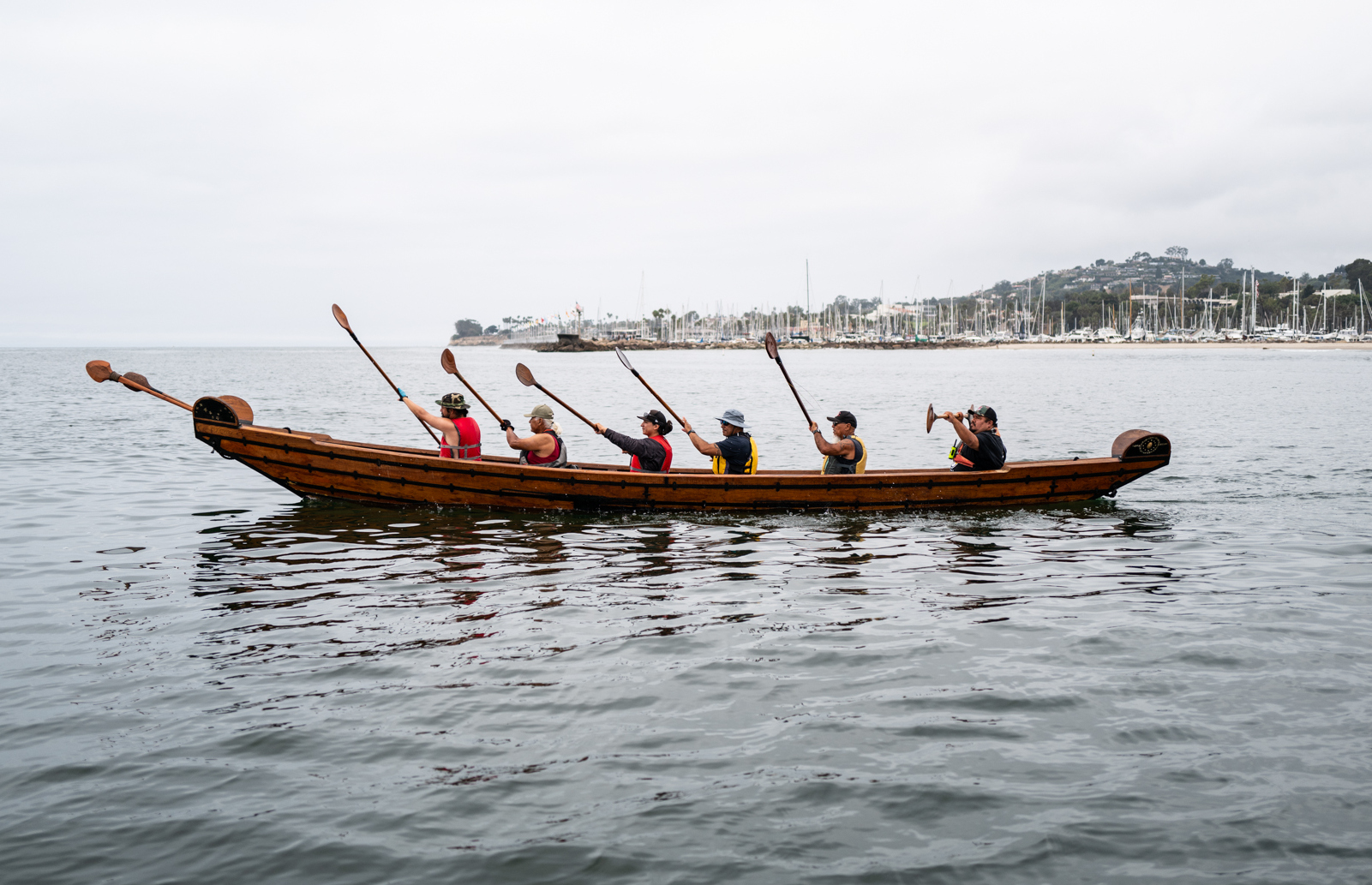Chumash Maritime History—Past, Present, & Future
**Events may have been canceled or postponed. Please contact the venue to confirm the event.
Date & Time
Thu, Nov 17 7:00 PM - 8:30 PM
Address (map)
113 Harbor Way
Venue (website)
S.B. Maritime Museum
The Santa Barbara Maritime Museum (SBMM) presents “Chumash Maritime History—Past, Present, & Future,” as told by Chumash Elder Puchuk Ya’ia’c (Alan Salazar), on Thursday, November 17, 2022 at 7:00 pm in the museum. As a founding member of the Chumash Maritime Association and one of the group’s most experienced paddlers, Salazar will share his knowledge of the history of the ocean plank canoes, known as tomols. As a storyteller, researcher, and knowledge keeper of Chumash history, he will share some of their stories in his presentation and answer any questions audience members may have. Cost is free for SBMM’s Navigator Circle Members, $10 for all other members, and $20 for members of the public. There will also be a pre-lecture reception for members only from 6:15-6:45pm. Register at: https://sbmm.org/santa-barbara-event/ and become a member at https://sbmm.org.
“I have paddled in all of the crossings from Channel Islands Harbor to Santa Cruz Island. There are currently only five other Chumash paddlers that can make that claim. It is a very elite group. I have paddled more miles in our tomols than any other Chumash paddler in modern times. At age 71, I am the oldest active paddler and still considered one of our stronger paddlers. I was raised to be proud of my Native American heritage and I take pride in being a positive role model and a respected Elder.” Alan Salazar – Puchuk Ya’ia’c (Fast Runner)
About Our Speaker
Alan Salazar has worked in several different areas throughout his life. He has been a traditional storyteller, an Indigenous educator and monitor/consultant, a spiritual adviser, a traditional paddler and a builder of Chumash canoes, a preschool teacher, and a juvenile institution officer. He is also the published author of Tata, The Tataviam Towhee: A Tribal Story and is currently working on his next book. As a spiritual adviser within the Chumash and Tataviam community, he leads ceremonies and prayer circles during traditional Native American gatherings and continues to fight for tribal issues of urban indigenous people. www.native-storytelling.com
Alan Salazar’s family has traced its family ancestry to the Chumash village of Ta’apu, now known as Simi Valley and the Tataviam village of Chaguayanga near Castaic, CA. They are Ventureno Chumash and Fernandeno Tataviam who were brought into the San Fernando Mission starting in 1799. He is a founding member of the Kern County Native American Heritage Preservation Council and the Chumash Maritime Association, a member of the California Indian Advisory Council for the Santa Barbara Museum of Natural History, and a community advisor with the Ventura County Indian Education Consortium for over 24 years. Since taking archaeology classes at Cal State Bakersfield, Salazar has actively monitored and protected his ancestors’ village sites and tribal territories. He was also the lead monitor from 2011 to 2017 at the Boeing Santa Susana Field Lab site in Simi Valley, which is a unique 2800-acre site with a sacred solstice and rock art.
As a member of the Chumash Maritime Association he helped build the first working traditional Chumash plank canoe in modern times and has paddled in this tomol for over 24 years. He is
a member of the Elder’s Council for the Fernandeno Tataviam Band of Mission Indians and has also been involved with teaching youth about Native American cultures for 30 years. He has done professional educational programs at schools, museums, and cultural events for 25 years, including storytelling programs at the American Museum of Britain in Bath, England. But it is the schools in Chumash and Tataviam territory that he enjoys going to the most.
|
|

